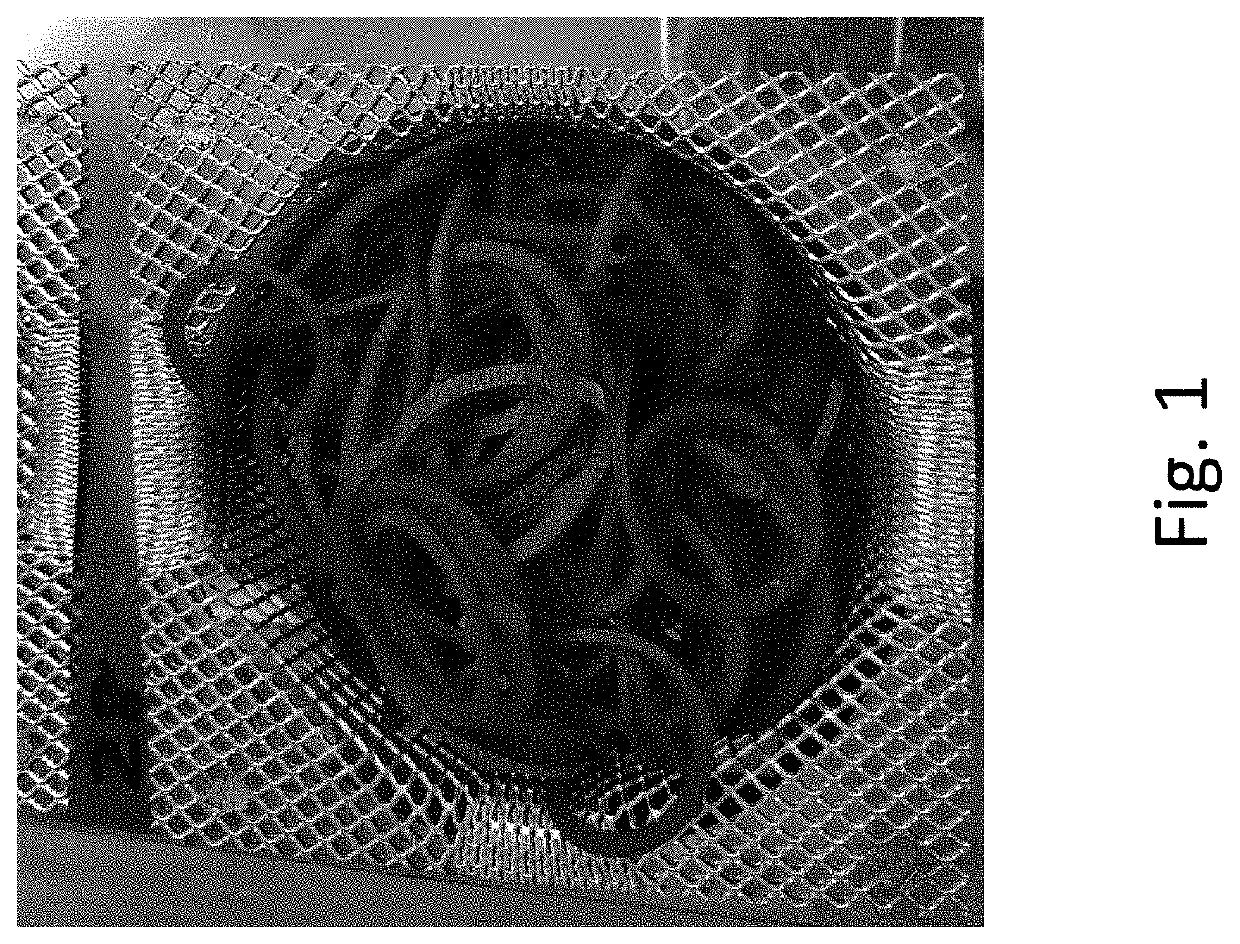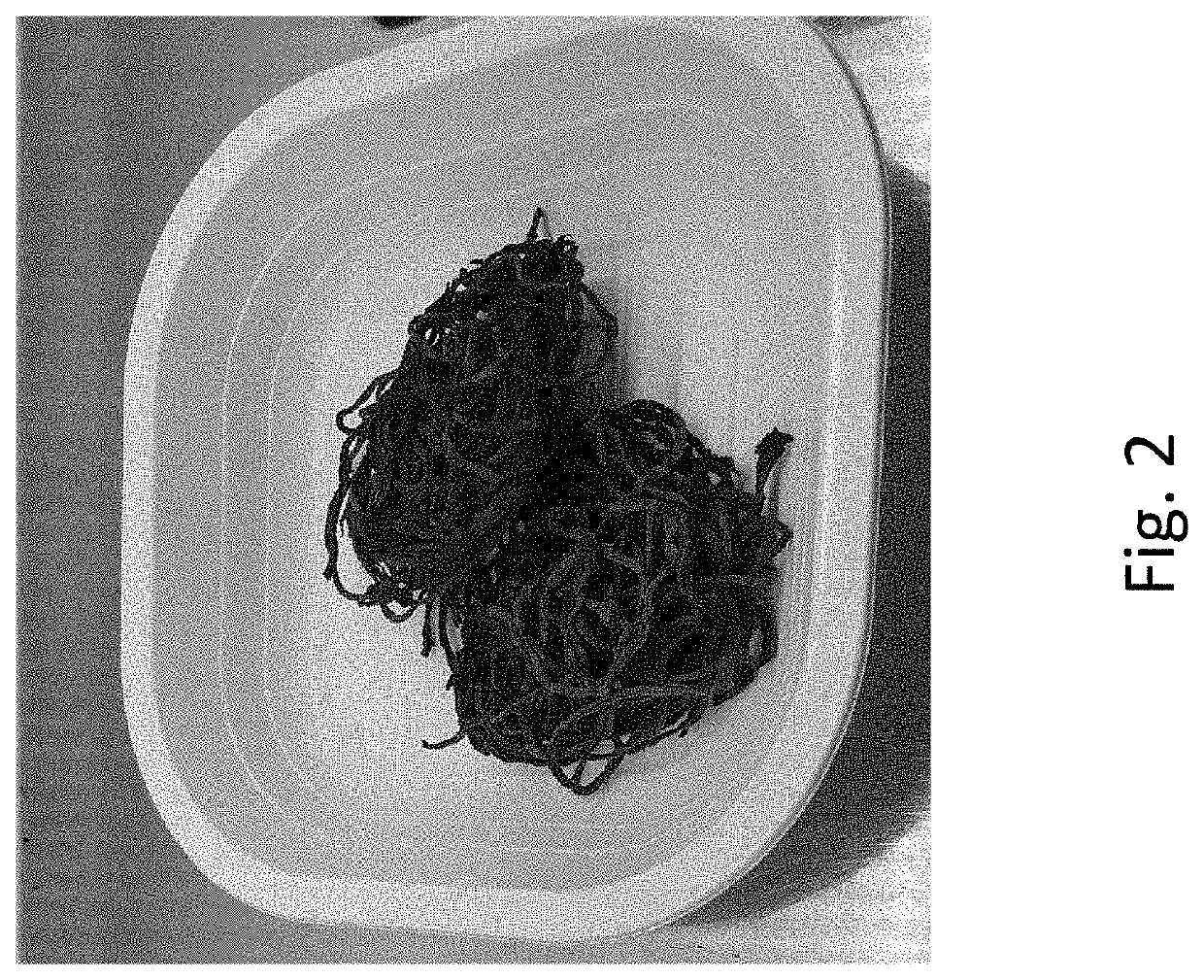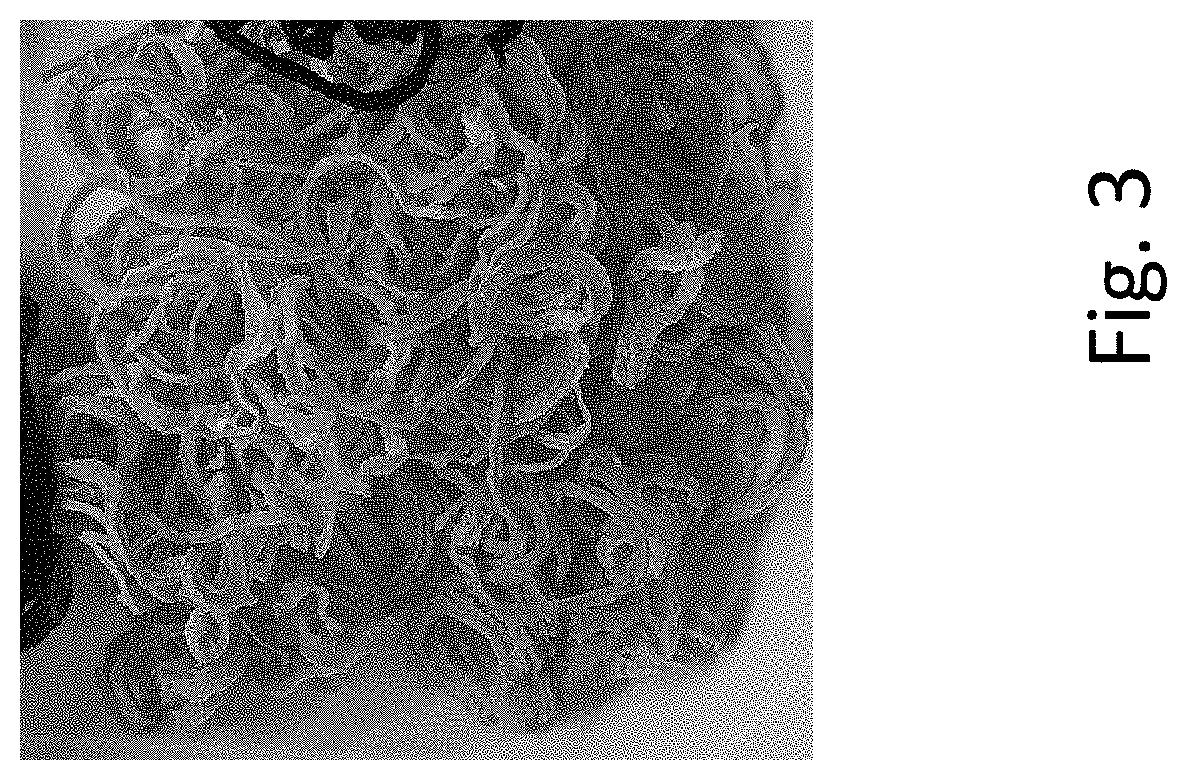Process for the production of a nest-shaped food product comprising strips of a dried vegetable and associated product
a technology for dried vegetables and food products, applied in the field of preparation of food products, can solve the problems of food generally only being stored in a refrigerated environment and for a limited period of time, products not being able to guarantee a high nutritional content in terms of fiber and other nutrients typical of certain types of garden vegetables, and not being regarded as a food able to guarantee a high nutritional content, etc., to avoid any disintegration of fresh pasta ingredients and strengthen the structure of dough
- Summary
- Abstract
- Description
- Claims
- Application Information
AI Technical Summary
Benefits of technology
Problems solved by technology
Method used
Image
Examples
example 1
[0108]First of all, about 500 g of fresh red turnips or beetroot were procured, where the rough and residual parts of the stem, i.e. all portions of the garden vegetable which were generally not edible, had previously been removed.
[0109]The fresh garden vegetable portions were carefully washed under a jet of water with a suitable pressure at room temperature.
[0110]The outer cuticle and residual growths were then removed from the thus washed garden vegetable portions.
[0111]The vegetable portions thus prepared were cut into strips, using an automatic spiral cutter, Streamer Compact / Compact Spiralizer model, supplied by the company Turatti, obtaining strips of vegetable with an average length of about 20 cm, a width of 0.4 cm and a thickness of 0.2 cm.
[0112]Thereafter, about 70 g of beetroot strips prepared in this way were automatically fed in metered amounts, placing them in a cylindrical perforated mold with a flat bottom and a diameter of about 10 cm and a depth of about 3.5 cm.
[01...
example 2
[0125]First of all, about 300 g of fresh carrots with an average ripening period of 85-90 days were procured; the ends of each root, which are normally not edible, were removed.
[0126]Each portion of the garden vegetable was carefully washed under a jet of water with a suitable pressure at room temperature.
[0127]The outer cuticle was then removed from the washed carrots.
[0128]The portions of fresh carrots thus obtained were cut by the cutting action of a blade, specifically using a manual cutter, i.e. the spiral vegetable slicer produced by the company Salter, model BW04294, in order to obtain strips of carrots with a spiral-shaped form.
[0129]The central part of the taproot, having a whitish color and a harder consistency, was discarded.
[0130]The strips of carrot thus obtained had the following dimensions: length=22 cm; width=0.2 cm; thickness=0.2 cm.
[0131]Specifically, the strips of carrot thus obtained ranged in length from 3 cm to 25 cm.
[0132]Thereafter about 70 g of carrot strips...
example 3
[0144]In exactly the same way as in Example 2, strips of carrots were obtained in accordance with steps a), b), c) and d) of the process according to this invention.
[0145]At the same time, using only water and durum wheat semolina, a dough of durum wheat semolina was prepared and was then extruded to obtain strips of dough with the following dimensions: length=25 cm; width=0.2 cm; thickness=0.1 cm.
[0146]To facilitate the subsequent operations and correctly set the subsequent parboiling treatment, the strips of dough thus obtained were placed in a nest arrangement on a metal tray.
[0147]In order to ensure the same drying time for both food ingredients (strips of fresh durum wheat semolina pasta and strips of carrots), the strips of dough thus obtained and arranged on a metal baking tray were subjected to a steam pre-cooking treatment using a ventilated steam oven UNOX CHEFTOP having a chamber saturated with steam, set to the temperature of 105° C. for a duration of 8 minutes, obtainin...
PUM
 Login to View More
Login to View More Abstract
Description
Claims
Application Information
 Login to View More
Login to View More - R&D
- Intellectual Property
- Life Sciences
- Materials
- Tech Scout
- Unparalleled Data Quality
- Higher Quality Content
- 60% Fewer Hallucinations
Browse by: Latest US Patents, China's latest patents, Technical Efficacy Thesaurus, Application Domain, Technology Topic, Popular Technical Reports.
© 2025 PatSnap. All rights reserved.Legal|Privacy policy|Modern Slavery Act Transparency Statement|Sitemap|About US| Contact US: help@patsnap.com



